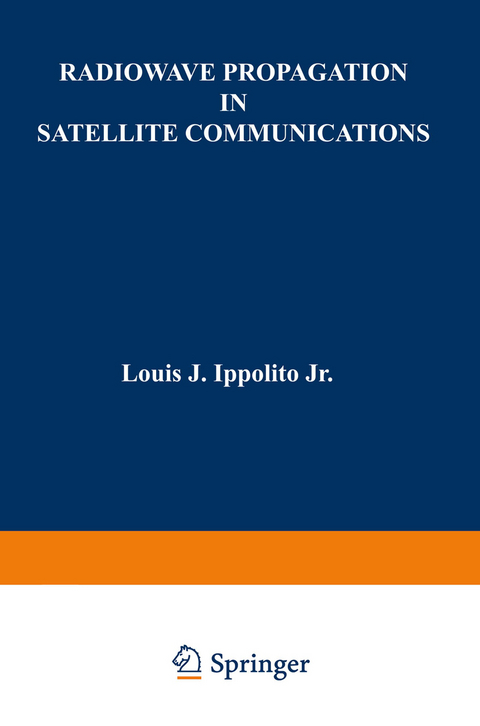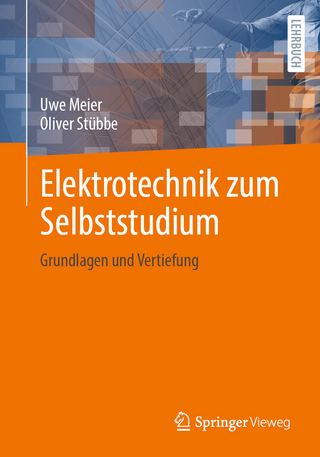
Radiowave Propagation in Satellite Communications
Springer (Verlag)
978-94-011-7029-1 (ISBN)
1 Introduction.- 1.1 Purpose and Objectives.- 1.2 Developments and Trends in Space Communications.- 1.3 Frequency Allocations and Regulatory Aspects.- References.- 2 Fundamentals of Radiowave Propagation.- 2.1 Transmission Principles.- 2.2 Antenna Gain and Free Space Attenuation.- 2.3 Polarization.- 2.4 Radiowave Frequency and Space Communications.- 2.5 Radiowave Propagation Mechanisms.- 2.6 Major Radiowave Propagation Factors in Space Communications.- References.- 3 Attenuation by Atmospheric Gases.- 3.1 Oxygen and Water Vapor Attenuation 25.- 3.2 Total Slant Path Atmospheric Attenuation.- 3.3 Summary of Atmospheric Attenuation Procedure.- References.- 4 Hydrometeor Attenuation on Satellite Paths.- 4.1 Classical Development for Rain Attenuation.- 4.2 Rain Attenuation Measurements.- 4.3 Cloud and Fog Attenuation.- References.- 5 Rain Attenuation Prediction Methods.- 5.1 Rice Holmberg Rain Model.- 5.2 Dutton-Dougherty Attenution Prediction.- 5.3 Lin Rain Attenuation Model.- 5.4 Crane Global Rain Attenuation Model.- 5.5 CCIR Rain Attenuation Model.- 5.6 Summary.- References.- 6 Depolarization on Satellite Paths.- 6.1 Depolarization Caused By Rain.- 6.2 Ice Depolarization.- 6.3 Multipath Depolarization.- References.- 7 Radio Noise in Satellite Communications.- 7.1 Noise From Atmospheric Gases.- 7.2 Noise From Clouds.- 7.3 Noise From Rain.- 7.4 Noise From Surface Emissions.- 7.5 Noise From Extra-terrestrial Sources.- References.- 8 Scintillation, Bandwidth Coherence, and Other Propagation Factors.- 8.1 Scintillation.- 8.2 Bandwidth Coherence.- 8.3 Antenna Gain Degradation and Angle of Arrival Effects.- References.- 9 Propagation Effects on Communications Satellite Link Performance.- 9.1 Communications System Parameters.- 9.2 Link Performance in the Presence of Propagation Effects.- References.- 10 Restoration Techniques for Overcoming Severe Attenuation.- 10.1 Site Diversity.- 10.2 Power Control.- 10.3 Orbital Diversity.- 10.4 Spot Beams.- 10.5 Signal Processing Restoration Techniques.- 10.6 Summary.- References.- Appendix A Elevation Angle Dependence for Slant Path Communications Links.- Appendix B Interpolation Procedure for Atmospheric Attenuation Coefficients.- Appendix D Crane Global Rain Attenuation Model Calculation Procedure.- Appendix E CCIR Rain Attenuation Model Calculation Procedure.- Appendix F CCIR Tropospheric Scintillation Model Procedure.
| Zusatzinfo | XIV, 242 p. |
|---|---|
| Verlagsort | Dordrecht |
| Sprache | englisch |
| Maße | 152 x 229 mm |
| Themenwelt | Schulbuch / Wörterbuch |
| Naturwissenschaften | |
| Sozialwissenschaften | |
| Technik ► Elektrotechnik / Energietechnik | |
| Technik ► Nachrichtentechnik | |
| ISBN-10 | 94-011-7029-0 / 9401170290 |
| ISBN-13 | 978-94-011-7029-1 / 9789401170291 |
| Zustand | Neuware |
| Haben Sie eine Frage zum Produkt? |
aus dem Bereich


